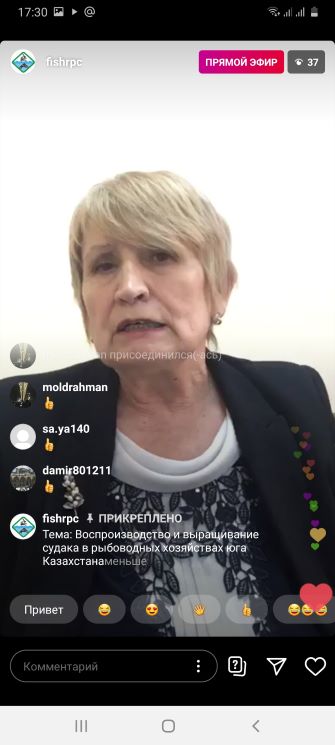Scientists of the subsidiary "NASEC" JSC- “Fisheries Research and Production Center” LLP have developed a technology for the production of fish seed material and marketable products of pike perch, which has a global novelty. A pilot project to obtain juvenile pike perch for stocking natural reservoirs is being implemented by the “Fisheries Research and Production Center” LLP in the Kyzylorda region. The design capacity of 240 thousand yearlings of zander per year.
Biotechnical methods for growing two-year-old zander in polyculture ponds were developed in Kazakhstan for the first time are available to farmers and can be used by them when growing zander in fish farming conditions. This technology will contribute to the restoration of the number of natural populations of zander in natural reservoirs.
The essence of the technology is that first zander producers are caught from natural reservoirs, and then they are transported to a fish farm, where zander is reproduced under artificial conditions. Zander spawning takes place in cages on nests, incubation of eggs in Amur apparatuses (this technology is patented). Breeding of juvenile zander is carried out in cages, rearing yearlings in ponds in polyculture with cyprinids. As a result of using the technology, they obtain high-quality, viable fish seed material for pike perch with high survivability and weight.
“Fisheries Research and Production Center” LLP is a subsidiary of the “National Agrarian Science and Educational Center” JSC and constantly monitors the status of ecosystems of water bodies in Kazakhstan and their biological resources, develops the biological basis for the rational use and reproduction of fish stocks, gives annual forecasts of the volume of fish catch, suggestions on fishing rules and regulations. Scientists of “Fisheries Research and Production Center” LLP are working on the conservation and augmentation of the fish resources of the Republic of Kazakhstan, and are also striving to discover new possibilities for their use.
Zander is extremely relevant at the present time, as it is commercially valuable. Possessing a number of biological features, zander is a very promising fish breeding facility, which is given special attention in a number of countries near and far abroad.
In Kazakhstan, zander breeding in pond farms has not yet acquired industrial proportions due to the lack of technologies for its cultivation in our conditions. In this regard, zander is not among the species of fish cultivated in the pond farms of the republic.
In recent decades, the export of zander to Europe has increased, which causes an exorbitant fishing press on the population of this species in all reservoirs of Kazakhstan, which leads to a decrease in its number, a change in size and weight characteristics and an imbalance in the age structure and gender ratio in the reservoir. The increased demand for zander fillet in the world market causes an increasing interest of domestic entrepreneurs in the conservation and increase of stocks of this fish in natural reservoirs, as well as in its breeding and rearing at fish breeding enterprises of the republic.
Adult zander - a predator, consumes any juvenile fish, if it is available to him in size. Since it has a narrow throat, it cannot harm large commercial fish; therefore, it is also valued as a biological land reclamator and is used to suppress small-value small fish in fisheries. The greatest activity in nutrition was observed from May to October; during wintering, it eats less. The competitors in the nutrition of juvenile zander in the lakes are planktonivorous fish - ide, ripus; adult zander - pike, catfish.
In support of the initiative of “NASEC” JSC, scientists of “Fisheries Research and Production Center” LLP conducted an online consultation on theme “Reproduction and cultivation of zander in fish farms in the south of Kazakhstan.”
The speaker of the consultation was Nina Sergeyevna Badryzlova, Senior Researcher of laboratory for aquaculture at the “Fisheries Research and Production Center” LLP.

Nina Badryzlova told where zander producers are caught, what fishing gears are used, how zander producers, fish stock, caviar and larva can be transported. How is the cultivation of zander in ponds, how to prepare ponds for stocking zander, how to spend the winter zander. For example, zander at water temperature below 80 ° C usually does not breed. At a temperature of 100C, the activity of zander nutrition decreases even more, since at this temperature the food is poorly digested, few nutrients enter the body and the fish slowly grows. At a water temperature below 2-50 ° C, zander, as a rule, stops eating and growing, and its breathing and blood circulation slow down. A sharp change in water temperature, even if it does not go beyond the optimal temperature conditions, causes a nervous shock in fish, which leads to death.


